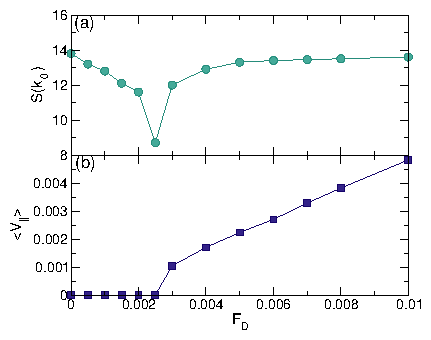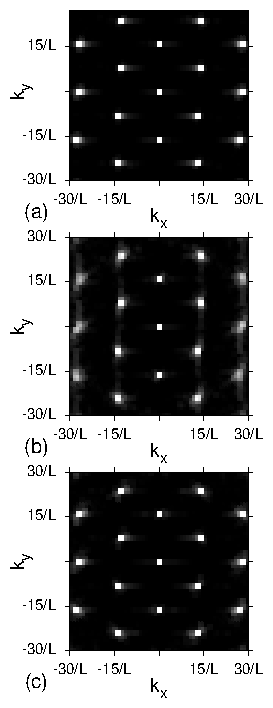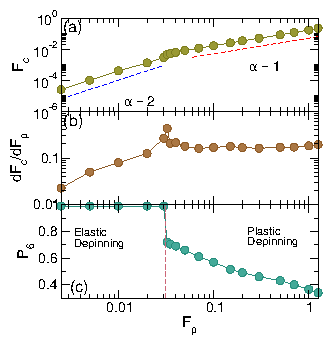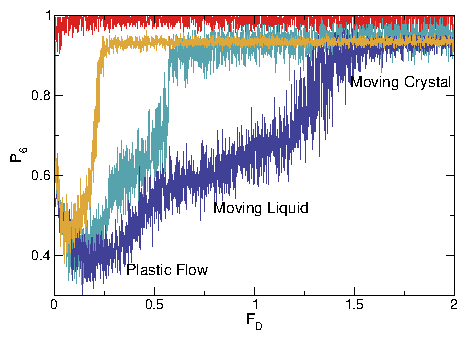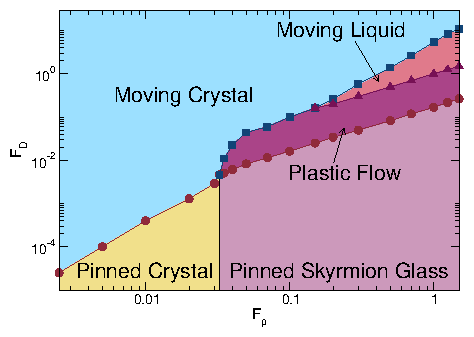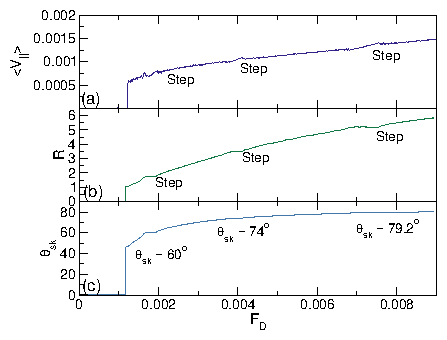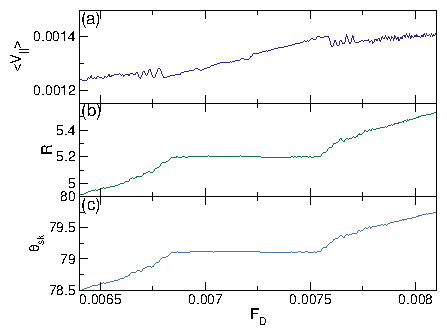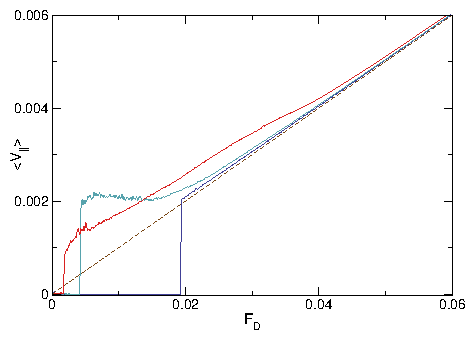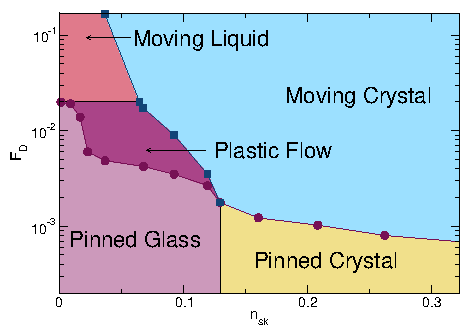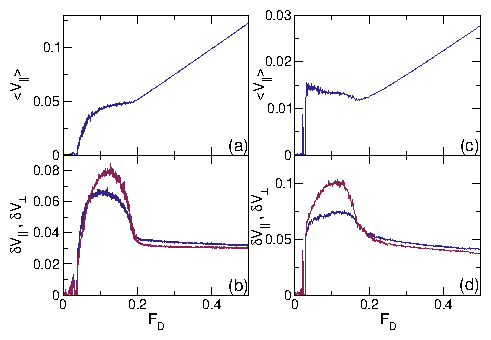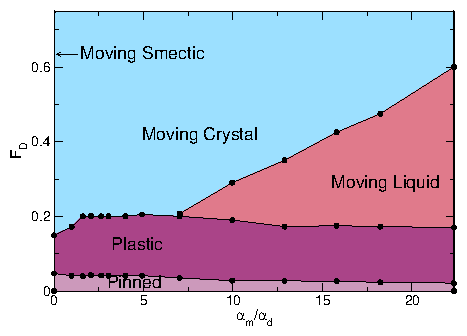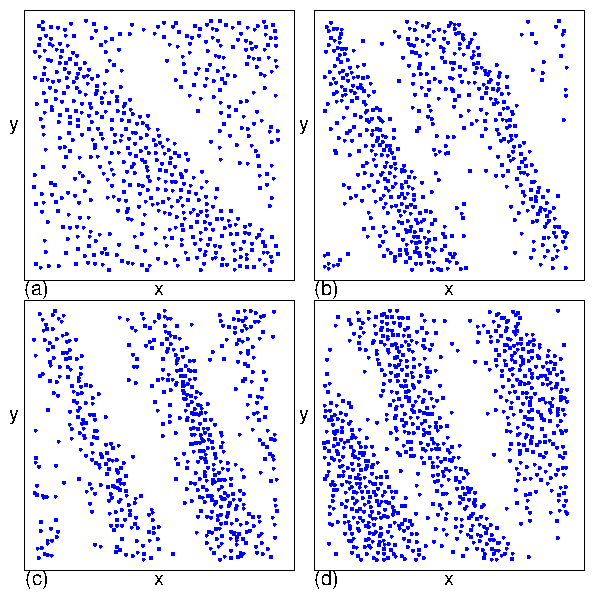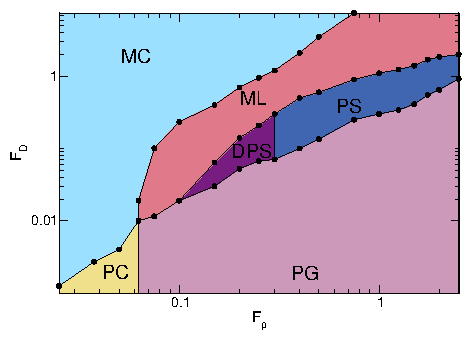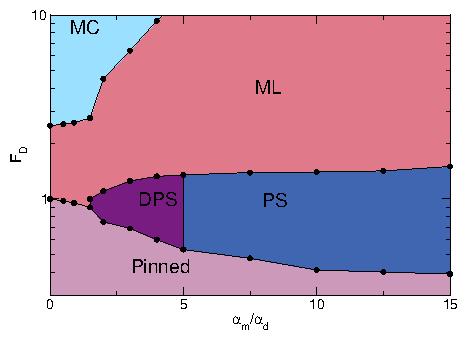 Figure 6: (a, c, e) Real space images of the skyrmion positions and
(b, d, f) the corresponding structure factors S(k)
for the system in Fig. 5 with nsk=0.16, np=0.2, and
αm/αd=9.95
at Fp = 0.5.
(a,b) At FD = 0.3, the plastic flow phase contains both pinned and moving
skyrmions,
and S(k) shows that the structure is random.
(c,d) At FD = 1.1, the skyrmion density is more uniform but the
system is still disordered and forms
a moving liquid (ML) phase, in which S(k) develops a ringlike feature.
(d,e) In the dynamically ordered moving crystal (MC) phase at FD = 1.75,
the skyrmions form a triangular lattice.
Figure 6: (a, c, e) Real space images of the skyrmion positions and
(b, d, f) the corresponding structure factors S(k)
for the system in Fig. 5 with nsk=0.16, np=0.2, and
αm/αd=9.95
at Fp = 0.5.
(a,b) At FD = 0.3, the plastic flow phase contains both pinned and moving
skyrmions,
and S(k) shows that the structure is random.
(c,d) At FD = 1.1, the skyrmion density is more uniform but the
system is still disordered and forms
a moving liquid (ML) phase, in which S(k) develops a ringlike feature.
(d,e) In the dynamically ordered moving crystal (MC) phase at FD = 1.75,
the skyrmions form a triangular lattice.
|
